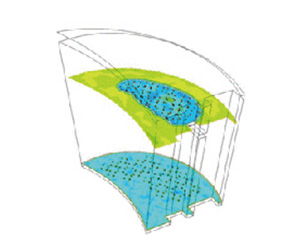Necessity of Accurate Analysis of A/C Load
Equipment selection in the A/C system design is based on basic design working conditions rather than operation working conditions. However, in practice, due to constant change of seasons, weather, occupancy rate and business activities, the energy consumption load is also changing. In most of the time, the actual load is below the design load. Fig. 4 shows the yearly cooling load change of a building.
Fig. 4 Dynamic Change of A/C Cooling Load of a Building
If we put the cooling loads shown in Fig. 4 in a descending order, we could get the cooling load distribution diagram as shown in Fig. 5.
| Load Rang e (kW) |
Duration (hours) |
| 3000-4233 |
275 |
| 2000-2999 |
858 |
| 1000-1999 |
1327 |
| Less Than 1,000 |
1929 |
Fig. 5 Duration of Different Loads of a Certain Building
It can be seen that the duration of design load of a building is rather short. In most of the times, the load value is much lower than the design load.In order to improve the building energy conservation performance, quantitative calculation and study of the hourly load and yearly load of the building are necessary.


































